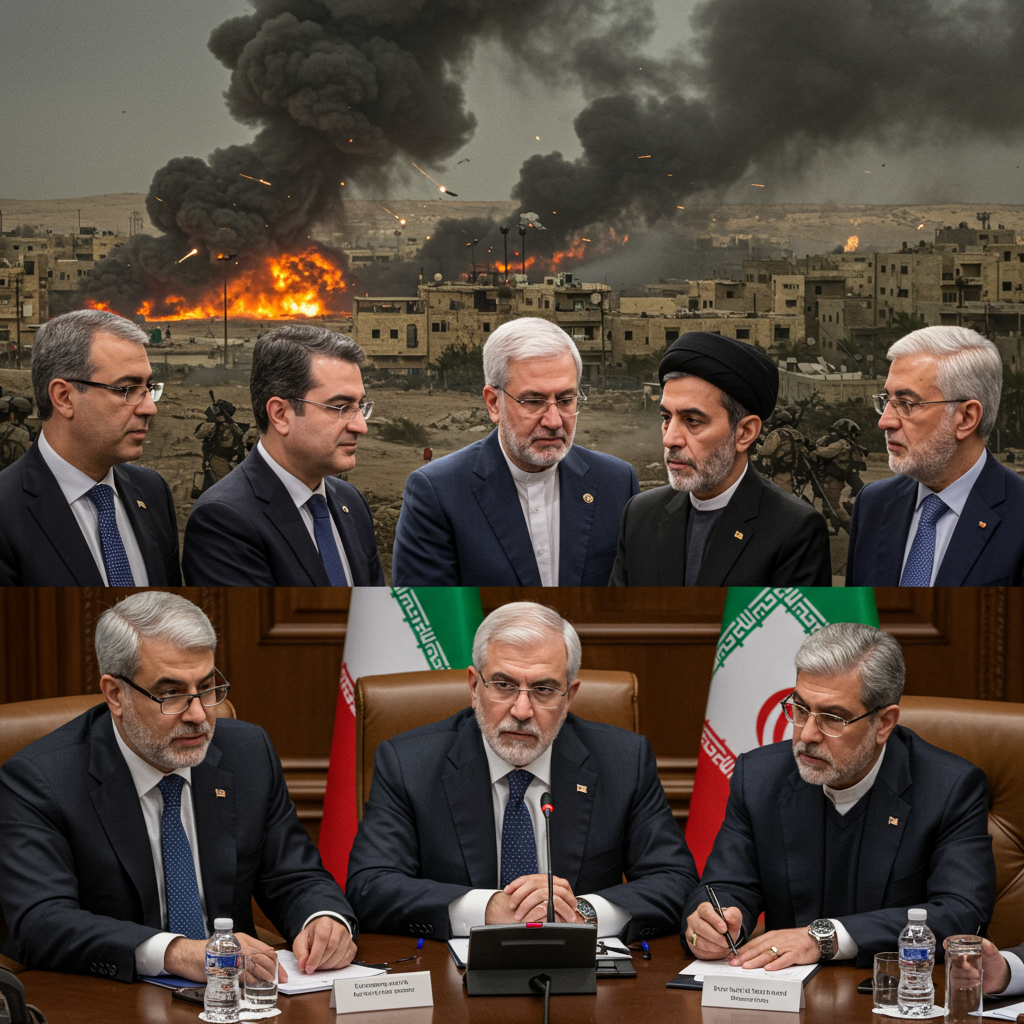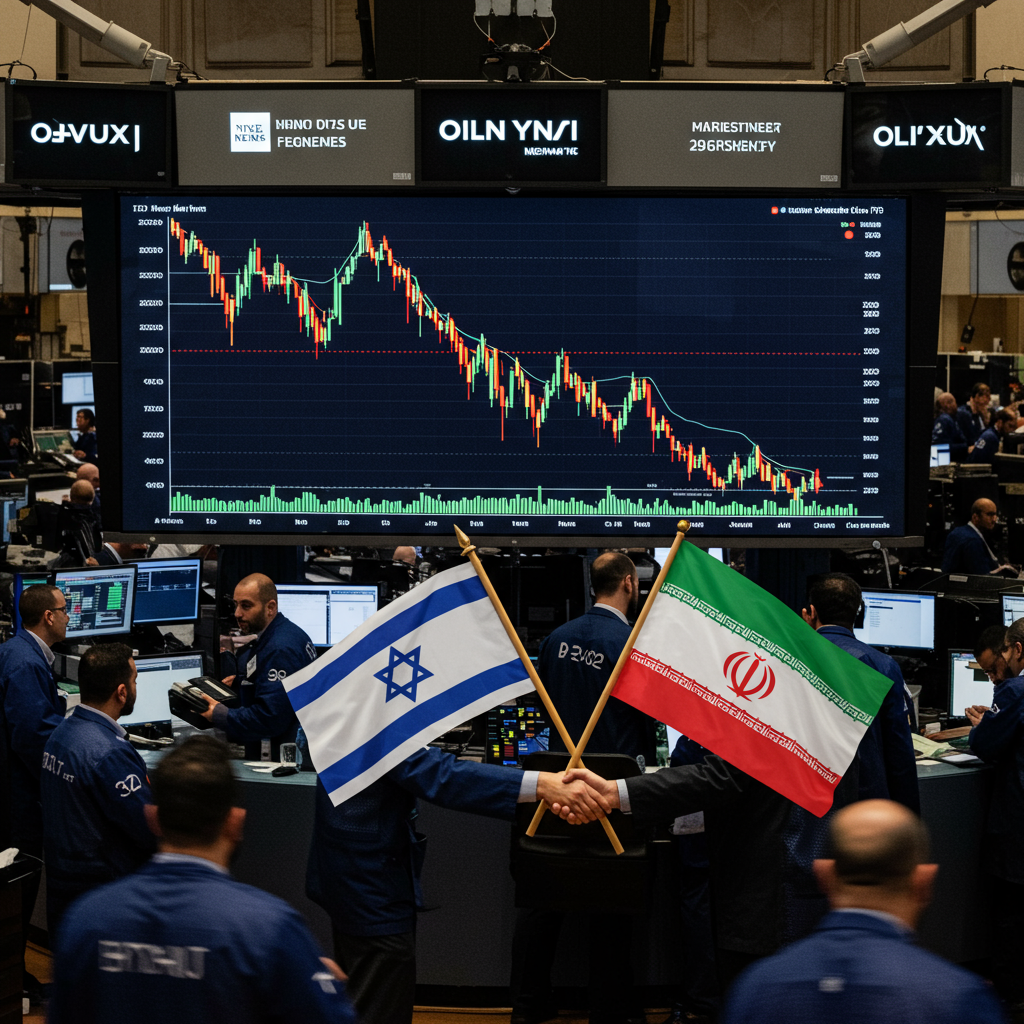A week into their direct military confrontation, Israel and Iran exchanged new, heavy strikes on Friday, June 20, 2025, even as significant diplomatic efforts got underway, including high-level meetings in Geneva. The simultaneous escalation of military action and commencement of talks underscore the volatile nature of the conflict and the complex pressures on leaders in Tehran, Tel Aviv, and Washington.
Diplomacy Takes Shape Amidst Conflict
Amidst the barrage of attacks, Iran’s Foreign Minister, Abbas Araghchi, traveled to Geneva for face-to-face meetings with top diplomats from the European Union, the United Kingdom, France, and Germany. This marked the first such direct encounter between Western and Iranian officials since the war began.
European leaders emphasized the critical need for diplomacy. French President Emmanuel Macron announced that the European representatives in Geneva would present Iran with a “comprehensive, diplomatic and technical offer of negotiation.” He argued that Israel’s current military operations alone could not effectively address the “threat” posed by Iran’s nuclear program, particularly given fortified sites and uncertainty about all enrichment locations.
Iran, however, set clear preconditions for any meaningful dialogue. Araghchi stated that his country was “not seeking negotiations with anyone” as long as Israel’s attacks continued. He described Iran’s actions as “legitimate self-defense” that would not cease. While open to “dialogue” with other parties, he stressed that talks would focus “solely on the nuclear issue and regional matters,” explicitly ruling out discussions on Iran’s missile capabilities. Araghchi also accused the U.S. of collaborating with Israel in the attacks.
Despite Iran’s tough stance, European diplomats expressed readiness for engagement. British Foreign Secretary David Lammy suggested a “window now exists within the next two weeks to achieve a diplomatic solution,” noting he had discussed this with U.S. officials. Germany’s Foreign Minister, Johann Wadephul, indicated the U.S. was aware of and supported these European-led talks, stating, “it’s Iran’s move now.”
U.S. Deliberation and the Nuclear Shadow
The unfolding conflict also places the United States in a precarious position. President Donald Trump is reportedly weighing direct U.S. military involvement, specifically considering a strike on Iran’s Fordo uranium enrichment facility, which is heavily protected deep under a mountain. Trump stated he would decide on U.S. military engagement within two weeks, linking his timeline to the “substantial chance” for renewed negotiations over Iran’s nuclear program.
The nuclear issue remains central to both the conflict and diplomatic efforts. Iran maintains its nuclear program is for peaceful purposes, but its decision to enrich uranium up to 60% – a short technical step from weapons-grade levels – has fueled international concern, particularly since the U.S. unilaterally withdrew from the 2015 nuclear deal (JCPOA) under the Trump administration. Following the U.S. exit, Iran increased enrichment levels and restricted access for international inspectors. European nations involved in the Geneva talks were key parties to the original JCPOA and have threatened to reimpose sanctions if Iran doesn’t improve cooperation with the International Atomic Energy Agency (IAEA). Israel, widely believed to possess its own nuclear weapons program, states its current air campaign aims to prevent Iran from developing a nuclear weapon.
Intensifying Military Actions
Both sides reported launching extensive new strikes on Friday.
Israel stated it conducted airstrikes into Friday morning using over 60 aircraft. Targets reportedly included industrial sites involved in missile manufacturing, the headquarters of Iran’s Organization of Defensive Innovation and Research (SPND – linked by the U.S. to potential nuclear weapons research), and missile storage and launch infrastructure components near the western cities of Kermanshah and Tabriz. Israeli forces also struck areas near the city of Rasht on the Caspian Sea, issuing a public warning beforehand for residents near the Industrial City to flee, although Iran’s internet shutdown may have limited the reach of this message. An Israeli military spokesperson indicated plans for “more sites to strike in Tehran, western Iran and other places.”
Iran retaliated with missile launches into southern Israel. These strikes caused damage to buildings, including a six-story residential structure, and resulted in minor injuries to five people from bruises, smoke inhalation, and anxiety. Later on Friday, air raid sirens blared in major cities like Jerusalem and Tel Aviv due to incoming Iranian missiles. Shrapnel from a subsequent strike reportedly injured a 16-year-old boy seriously and a 54-year-old man moderately. This followed a strike the previous day on Soroka Medical Center in Beersheba that wounded at least 80 patients and medical workers.
Casualties Mount and Rhetoric Sharpens
Casualty figures highlight the growing toll of the week-old conflict, which began with Israeli strikes on June 13. A Washington-based Iranian human rights group estimates at least 657 people have been killed in Iran, including 263 civilians, with over 2,000 wounded. Iran has not publicly acknowledged these losses.
Israeli army estimates indicate Iran has fired approximately 450 missiles and 1,000 drones at Israel. While Israel’s multi-tiered air defenses have intercepted most, at least 24 people in Israel have been killed and hundreds wounded. Israeli military assessments suggest their campaign targeting Iranian ballistic missile launchers may have contributed to a decline in Iranian attacks since the start of the conflict.
The rhetoric has also intensified. Following the strike on the Soroka Medical Center, Israeli Defense Minister Israel Katz issued a stark threat against Iranian Supreme Leader Ayatollah Ali Khamenei, stating that for Israel to achieve its goals, Khamenei “absolutely should not continue to exist.” Israeli Prime Minister Benjamin Netanyahu expressed trust in President Trump, noting the U.S. was “already helping a lot.”
Khamenei’s Greatest Challenge
The current crisis is described as potentially the most significant challenge faced by Iran’s Supreme Leader, Ayatollah Ali Khamenei, in his over three decades of rule. Intense pressure from Israel’s punishing air campaign, which has reportedly decimated military leadership and aspects of the nuclear program, coupled with direct threats against his life, presents Khamenei with a critical dilemma: risk further devastation by escalating retaliation or pursue a diplomatic path that might require concessions on the nuclear program – a centerpiece of his policy.
Khamenei has publicly maintained a defiant stance, vowing that the “Iranian nation is not one to surrender” and warning the U.S. against intervention. His rule has been characterized by consolidating clerical power, building the powerful Revolutionary Guard (which controls military units, the missile program, and the regional “Axis of Resistance”), and brutally suppressing domestic dissent. However, the “Axis of Resistance” – which includes allies like Hezbollah, Hamas, and previously relied heavily on Syria – is currently at its lowest ebb following the events of the past two years, including the aftermath of the October 7, 2023 attacks and recent regional shifts, directly contributing to the unprecedented pressure Khamenei now faces.
References
- apnews.com
- www.inquirer.com
- <a href="https://norfolkdailynews.com/news/national/newsnational/a-week-into-war-israel-iran-launch-new-strikes-as-diplomatic-effort-gets-underway/article6031cb24-a293-4751-bd92-9f0ef305fca8.html”>norfolkdailynews.com
- www.kxlh.com
- www.bostonglobe.com



